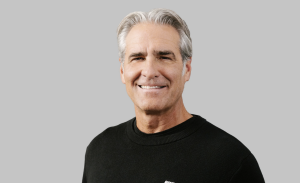
Right now, Elliott Hill (above) must be experiencing a touch of déjà vu.
Last month, the former Nike veteran of some thirty-plus years (and who actually retired from the sports giant in 2020), sensationally made his return to the business – to become its new chief executive.
He replaced outgoing CEO, John Donahoe – the former boss of eBay – who had suffered, it is accurate to say, something of a tumultuous four-year stint at the sports brand – one which had seen it post a series of worrying losses, and grapple with how best to sell direct to consumers, while also selling through wholesalers too.
Donahoe was revealed to be ‘stepping down’ from the job a couple of months ago [which many people think is corporate-speak for being eased out], leaving Hill (who had risen from intern to president of its consumer marketplace), to take the top job that many thought had eluded him.
But here’s the thing.
What does this really say about Nike’s own internal executive succession planning, if it has had to persuade/pull-back/re-hire someone that had left, and was no longer thought as part of the business?
One has to ask where it’s own succession plan was, and why there wasn’t a ready-and-willing queue of tens of internal Nike candidates just waiting to step up and take the role that they thought should deservedly be theirs.
For while old ties do have their place – they know the business, can be reinstalled quickly and can hit the ground running – many commentators have noted that going back to an old-hand like Hill is suggestive of Nike merely wanting a return a ‘safe pair of hands ’ – someone the business is familiar with, and will know the lie of the land and can steady the ship – rather than someone with a new vision, and passion, and who can be there for the long haul?
And so, it forces this question: Is such an appointment a failure of leadership succession planning, and by implication, a failure of Nike’s HR team to properly prepare for the exit of an under-performing leader?
The rise of the ‘Boomerang’ leader
These questions wouldn’t be so pertinent if Hill was an isolated case.
But right now, it appears that there is something of a trend for what many are calling the ‘Boomerang leader’ – a person who left, but is now back leading their old businesses again.
Disney’s Bob Iger and Starbucks’ Howard Schultz are both classic examples of boomerang leaders. Both are executives who previously left, but have then been persuaded to return to lead their former companies (normally out of some sort of sticky situation).
Are boomerang leaders a quick fix rather than a proper fix?
The problem with Boomerang leaders though (according to Fortune), is that their rise is unashamedly a troubling one.
It argues their return to the business smacks of companies that “have failed to establish internal leadership development programs to help create and suss out employees with CEO potential.”
Moreover, a study of 167 boomerang CEOs from the S&P Composite 1500 finds these hero-returns often don’t even bring back the bounce in company performance that was originally hoped for.
The study found that the annual stock performance of boomerang CEOs was actually 10.1% lower than that of their first-time counterparts.
On the flipside though, there are those who actually say boomerang leaders are actually a triumph of internal mobility – because that person is (effectively) an internal hire – just one who temporarily stepped outside the business to gain more experience – before stepping back in.
So which is it? Failed succession planning, or the genius step-stoning of the best internal candidate?
Build, borrow or buy?
Commenting on these issues, Keyia Burton, senior principal within Gartner’s Research & Advisory division, says: “We don’t know who Nike had internally to choose from. But even if we did, the fact Nike has chosen a boomerang leaders doesn’t necessary mean it’s a failure of a company’s own internal succession planning process.”
Why? Well, according to Burton, who was speaking to TLNT exclusively, all companies need to make a choice between what she calls ‘building, borrowing or buying’ talent.
Moreover, she says that each one of these strategies is a legitimate one to take if that’s what works for the organization.
She says: “It may not make sense for some companies to build all of their executive talent up; it might simply be easier for them to buy-in that person when they need it.”
Burton adds: “Outwardly Hill’s appointment could be seen as Nike buying in Hill’s skills. But, it could also be argued that it is the pinnacle of it building its own talent base too – where its leaders know when to step outside to get more experience, to then be able to come back in, to take the top job when it becomes available.”
She continues: “Hill is likely one of those Nike leaders who was aware of what he needed to do to improve his skills – which involved moving outside for a while. And it could be, that as part of Nike’s development plan, it is working this into cultivating its next leaders – ie equipping them to know when to leave in order to come back stronger.”
The need for communication
It’s certainly the case that when news that Hill was returning was announced, there were reports that employees there were whooping at this prospect.
But whatever strategy companies choose for their succession planning takes, it’s clear that HR’s role in all of it is to make sure this is communicated clearly.
Gartner’s own research (2023) recently found that less than one in two employees currently have a clear understanding of the potential career paths within their organization.
Gartner also found that a lack of future career opportunities is now the second-top driver of employee attrition.
It finds more than two-fifths of employees it polled (41%) said they’d recently made an external job movement for better professional development opportunities. This was almost equal to those who said they’d left for higher compensation (44%).
“Capability need is what should drive the type of succession/talent plans companies need,” concludes Burton.
“If companies want to grow their own talent, that’s fine, but these structures take time to bed-in. If companies are not able to grow their own talent themselves, buying it in externally can be just as appropriate a solution.”
